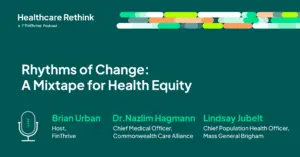How to Close the Homework Gap Based on Student Connectivity
CoSN today released a report on the preliminary findings of a breakthrough study on students’ at-home internet connectivity and provided guidelines on bandwidth, devices and other remote learning needs based on the data. The study, supported by a grant from the Chan Zuckerberg Initiative (CZI), fills a critical need among educators and policymakers for detailed insight on students’ learning experiences at home during the COVID-19 pandemic.
Thirteen K-12 urban, suburban and rural school districts from across the United States with approximately 750,000 students participated in the six-week study, securely sharing information on internet usage, latency, and performance from network filter logs and video conferencing solutions. The resulting findings will guide school district technology leaders across the United States working to improve online learning equity.
“Harnessing hard data on real students’ experiences during the unprecedented shift to online learning that took place over the past year has enabled CoSN to develop detailed recommendations on what their at-home learning needs actually are,” said Keith Krueger, CEO of CoSN. “The Student Home Connectivity Study serves as a key foundational step toward empowering educators and policymakers to address digital equity for students learning from home and closing the Homework Gap.”
“The COVID-19 pandemic has cast longstanding education disparities into sharp relief. Internet access remains critical to supporting student learning especially during these unprecedented times,” said Sandra Liu Huang, Head of Education at CZI. “The work that CoSN is doing to define the broadband need is absolutely vital to connect students and teachers, provide access to high-quality resources and build an equitable future for all students during the pandemic and beyond.”
Key findings from the Student Home Connectivity Study include:
- Learning with Video is Essential for Education. Over 85 percent of network traffic in remote learning is used for video, which requires sufficient upload and download speeds. This increasingly popular learning trend is expected to continue for the foreseeable future.
- Students are Mobile and Rely on Wi-Fi. Many students participate in online learning activities outside of their own home, with 92 percent using Wi-Fi to do so. Students oftentimes concurrently use district-provided devices and personal devices, increasing Wi-Fi bandwidth needs.
- Certain Communities, Especially in Remote and Rural Areas, Require More Support and Resources. Students in remote or rural areas most often have limited internet access and students working in areas with a large concentration of other students also experience poor connectivity.
- The Remote Learning Experience is Significantly Impacted by Device Quality. The quality of a student’s experience can be impacted by the age, type, quality, and configuration of the device they’re using. Routinely collecting data sets that provide insight into student use of district-provided devices can enhance their experiences.
Based on the data from the study, CoSN recommends a per-student minimum bandwidth standard of 25 Mbps for downloading and 12 Mbps for uploading. CoSN members now have access to a Student Home Bandwidth Calculator, as well as the aggregated data set, to determine their district’s specific needs. Each participating district also received a detailed data set and dashboard, so that they can take action to provide internet connectivity for their own underserved students and subgroups. The data collection process was developed in partnership with Innive Inc. and overseen by an advisory group of educators.
Participating districts included:
- Aldine ISD (TX)
- Beaverton School District (OR)
- Boston Public Schools (MA)
- Dallas Independent School District (TX)
- Ector County ISD (TX)
- Fauquier County Public Schools (VA)
- Forest Ridge School District 142 (IL)
- Hillsborough County Public Schools (FL)
- MSD of Wayne Township (IN)
- Rock Hill Schools York 3 (SC)
- Santa Fe Public Schools (NM)
- St. Charles CUSD 303 (IL)
- Wake County Public School System (NC)
“Santa Fe Public Schools now has data on every single student’s ability to access internet resources, which allows us to be much more focused on individual needs and challenges, and provide student-specific solutions. No district can afford to make guesses about connecting students. We now have a much better understanding of the factors that prevent all students from fully participating in hybrid learning and can take corrective action,” said Tom Ryan, Chair, Educator Advisory Group and Chief Information & Strategy Officer, Santa Fe Public Schools (NM).
“As the new Chair of the CoSN Board of Directors, I am thrilled to be part of such critical work in support of closing the digital divide. The valuable information that our district has gained from participating in this study will help us create a more effective and equitable online learning environment for all students moving forward,” said Steve Langford, CoSN Board Chair and Chief Information Officer, Beaverton School District (OR).
We are pleased to have been a partner in this study. The data set that we’ve created and analyzed provides detailed information that will help school districts be in a better position to address student learning and engagement issues related to limited internet access,” said Gautham Sampath, CEO of Innive.
Read the full Student Home Connectivity Study report and watch a short overview video on the data and how it can be used by edtech leaders.
Learn more about CoSN’s related work, including the Digital Equity and Smart Education Networks by Design (SEND) initiatives. CoSN is a vendor-neutral association.







